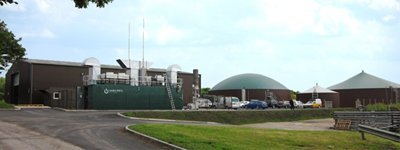Water utility using sewage sludge to create energy
Thursday, 02 May, 2013
Yarra Valley Water is developing an innovative waste-to-energy facility in the northern suburbs of Melbourne which will convert organic waste destined for landfills into energy - reducing energy costs, waste to landfill and greenhouse gas emissions.
The ambitious project is part of the utility’s approach to operating its facilities within the carrying capacity of nature, delivering better outcomes for the environment and customers.
Yarra Valley Water has selected Aquatec-Maxcon, an Australian company specialising in industrial wastewater treatment, as its partner to develop the facility.
“We are designing the waste-to-energy facility to sit next to one of our existing sewage treatment plants,” says Tony Kelly, Managing Director at Yarra Valley Water.

“The project will generate enough biogas to run the facility and the existing sewage treatment plant by co-digesting sewage sludge with organic waste trucked to the site.
“It’s a great solution for re-using organic waste that would otherwise go to landfill. Instead of treating our sludge as waste, we’re treating it as a product with value that can be re-used to create and capture methane gas resulting in significant environmental and cost benefits.”
At the waste-to-energy facility, sewage sludge left over from the treatment plant process would be co-digested with imported organic waste in an anaerobic digester (sealed vessel) where it is converted into methane or ‘biogas’ in the absence of oxygen. This process captures the methane before it hits the environment and turns it into renewable energy, preventing greenhouse gas emissions.
“The facility will help us meet our environmental obligations to reduce the quantity of nutrients being discharged into Port Phillip Bay, while creating a sewage treatment plant site that is energy self-sufficient,” Kelly says.
Co-digestion is a process that is successfully used throughout the world, particularly in Europe and the United States of America.
Bennett Horenstein is Manager of Environmental Services at East Bay Municipal Utility District in California, a water utility that successfully produces green energy from waste. He visited Yarra Valley Water in 2010/11 to review and assess areas related to sewage treatment plants, including renewable energy generation.
“I am thrilled that Yarra Valley Water is launching this waste-to-energy facility, providing enormous value to its customers and the environment. Leading the local industry with such a bold initiative demonstrates an impressive stewardship of environmental resources and will hopefully get other businesses thinking and acting,” says Horenstein.
Adam Lovell, Executive Director of Water Services Association of Australia (WSAA), agrees, writing in a 1 March WSAA blog: “As an industry we need to accelerate our use of the energy we can capture from sewage processing … East Bay Municipal Utility District’s success demonstrates it can be done. Yarra Valley Water in Melbourne has pressed the go button on a similar scheme, and I’m looking forward to their success.”
Yarra Valley Water decided to use anaerobic digestion technology based on a business feasibility decision-making framework, which included a detailed site selection process to determine the most appropriate site for the first facility.
The feasibility study also identified numerous opportunities for recovery and re-use of organic waste.
Researchers trial magnetic resin to remove PFAS
A magnetic resin invented at The University of Queensland will be trialled at wastewater...
A sustainable approach to increase wastewater recycling
Flinders University research is investigating improved effluent treatment and biosolids removal...
Inverell upgrades 30-year-old aeration system
The project entailed building a new tank at the Inverell Sewage Treatment Plant, to allow...










